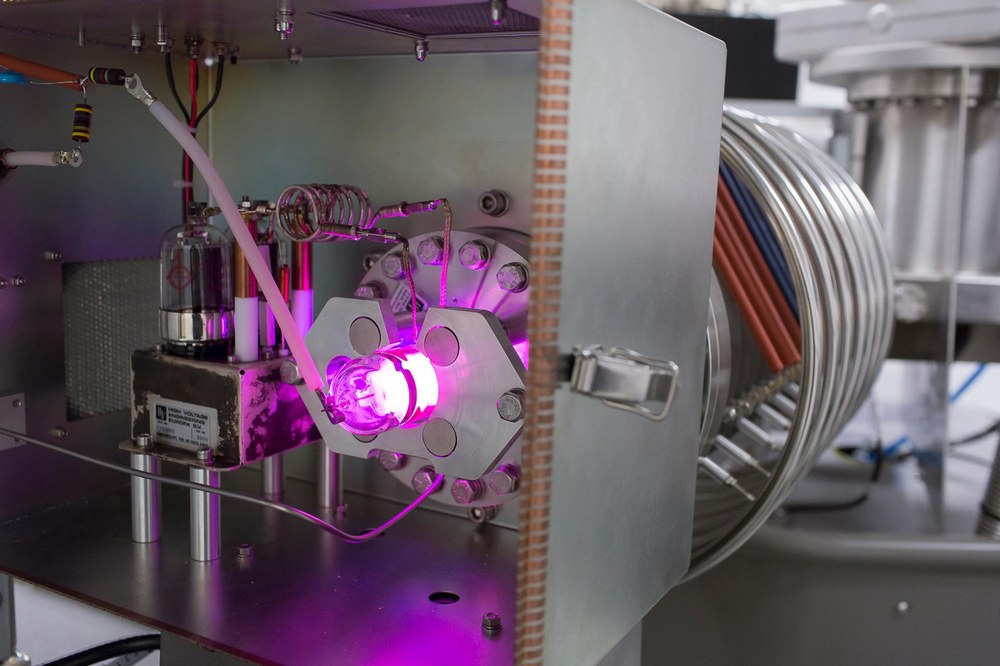Complex Irradiation Facility (CIF)


The irradiation facility at the German Aerospace Center (Deutsches Zentrum für Luft- und raumfahrt; DLR) Institute of Space Systems in Bremen has been developed to investigate material surface changes (degradation) in space conditions beyond near-Earth orbit. At the facility, a sample in an ultra-high vacuum (UHV) is irradiated either separately or simultaneously with electromagnetic radiation (simulated by three light sources) and with protons and electrons.
Simulation of radiation conditions in space
The large-scale Complex Irradiation Facility (CIF) at the German Aerospace Center (Deutsches Zentrum für Luft- und Raumfahrt; DLR) offers the selection and dimensioning of radiation sources, allowing the conditions of interplanetary space to be simulated as realistically as possible.
In particular, the energy and intensity range of the electron and proton accelerator was specifically designed to cover most of the corresponding parameters for solar wind. The quality of the vacuum is another important aspect, as the molecules of any residual gas can interact with the radiation and change the surface of the samples, thus impacting investigations. The facility has therefore been built without organic components (such as rubber seals and pump oils) and using UHV technology to prevent self-contamination.
The facility's three light sources are an argon source for vacuum ultraviolet (VUV) light, a deuterium UV lamp and a xenon lamp as a solar simulator. Together, these sources cover a wavelength range from 40–2150 nanometres. The argon VUV source represents an internationally unique feature, as comparable systems are usually equipped with deuterium lamps that can only generate light above 110 nanometres.
The corpuscular radiation, electrons and protons, are generated in a low-energy range of 1–100 kiloelectronvolts, resulting in very low penetration depths into materials. The outcome is a change to the thermo-optical properties of material surfaces, which play a key role in the thermal design of satellite components and membrane design for solar sails. Separate and simultaneous irradiation using the individual sources enables an array of experimental scenarios, enabling potential effects to be pinpointed as comprehensively as possible.
